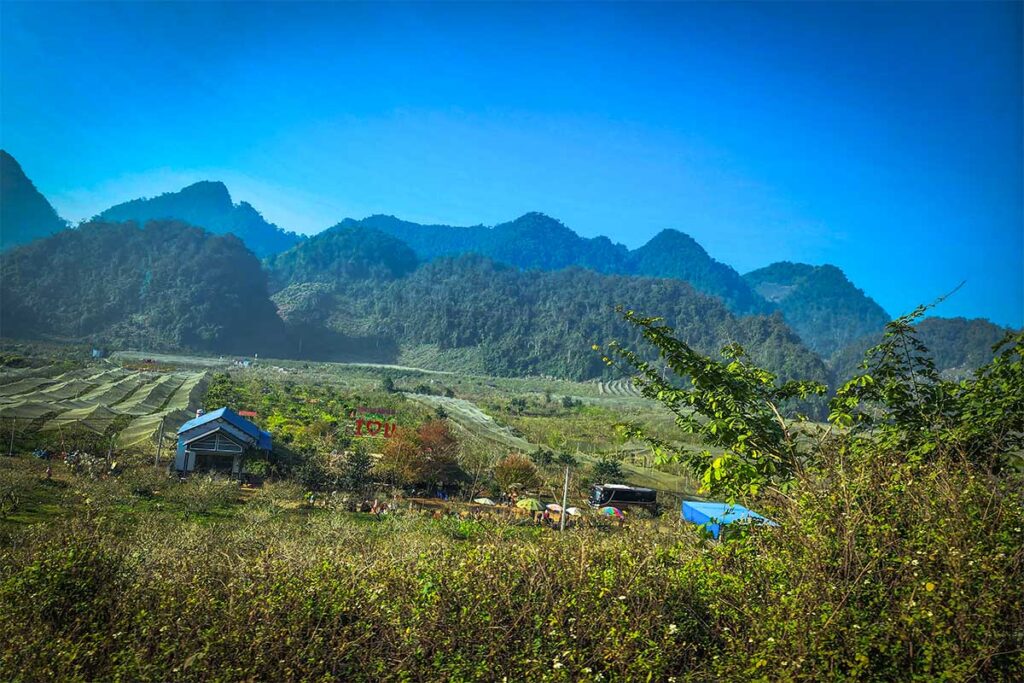Climate of Moc Chau
Moc Chau has a highland climate, which means cooler temperatures year-round compared to Hanoi and other lowland areas. The region experiences all four seasons—spring, summer, autumn, and winter—each bringing its own distinct weather patterns and scenery.
Thanks to its elevation, Moc Chau stays relatively mild even during Vietnam’s hot season. Evenings and early mornings are often chilly, especially from late autumn to early spring. The rainy season runs from May to August, while the dry season spans November to March.
Temperatures typically range from 15°C to 22°C (59°F to 72°F), but in the coldest winter months, they can drop close to 0°C, especially in the early morning. The high humidity during the rainy season and the mist in winter are also key parts of Moc Chau’s atmosphere, influencing both the scenery and the travel experience.
When is the best time to visit Moc Chau?
There’s no single “best” time to visit Moc Chau—it really depends on what kind of experience you’re after.
- Best weather: If you prefer comfortable weather with clear skies and less rain, the dry season from October to April is ideal.
- Blossom season: If you’re chasing flower seasons, aim for January to February for plum blossoms, or November to December for fields of mustard flowers and buckwheat.
- Best scenic landscapes: For those who love lush green landscapes and waterfalls, the rainy season from June to September is when nature is at its most vibrant.
Ultimately, the best time also depends on your tolerance for cold mornings, rainy days, or peak-season crowds—each season has its trade-offs.
Best Weather in Moc Chau
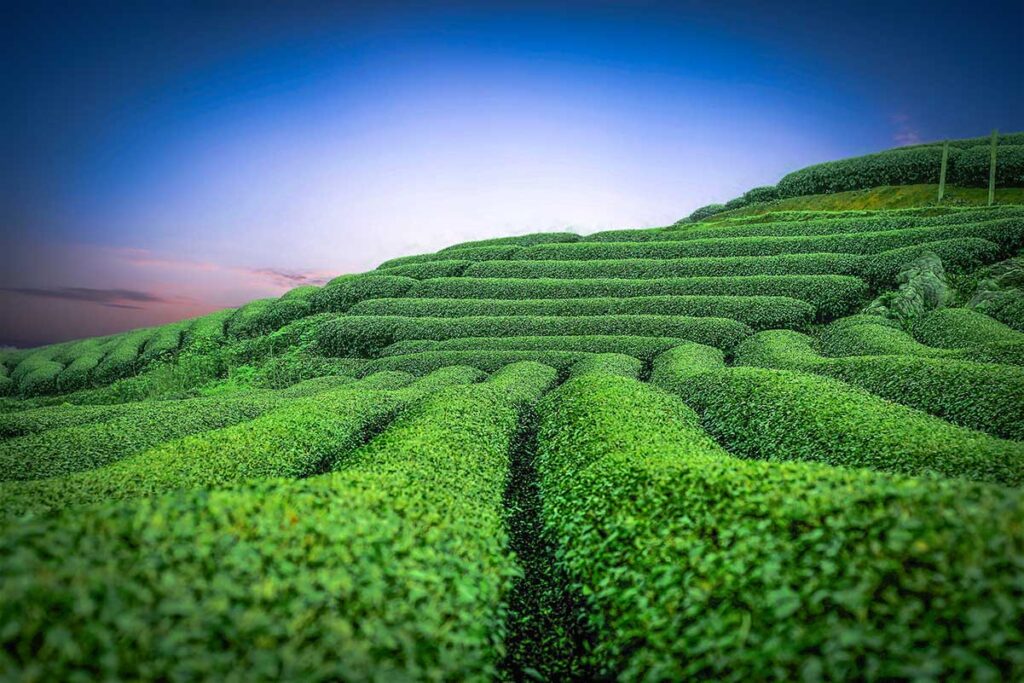
The best weather in Moc Chau typically falls between November and April, when the climate is mild, dry, and comfortable. This period offers the most stable conditions for general sightseeing, riding a motorbike, exploring tea hills, or simply enjoying the clear, open skies.
Rainfall is low during these months, humidity is manageable, and the chances of sunny days are much higher compared to the rest of the year. While this season is ideal for outdoor activities, it’s worth noting that December and January are the coldest months, with early morning temperatures often dropping to 5°C or even lower, especially in rural or elevated areas. Warm clothing is essential if visiting during this time.
Blossom Season in Moc Chau
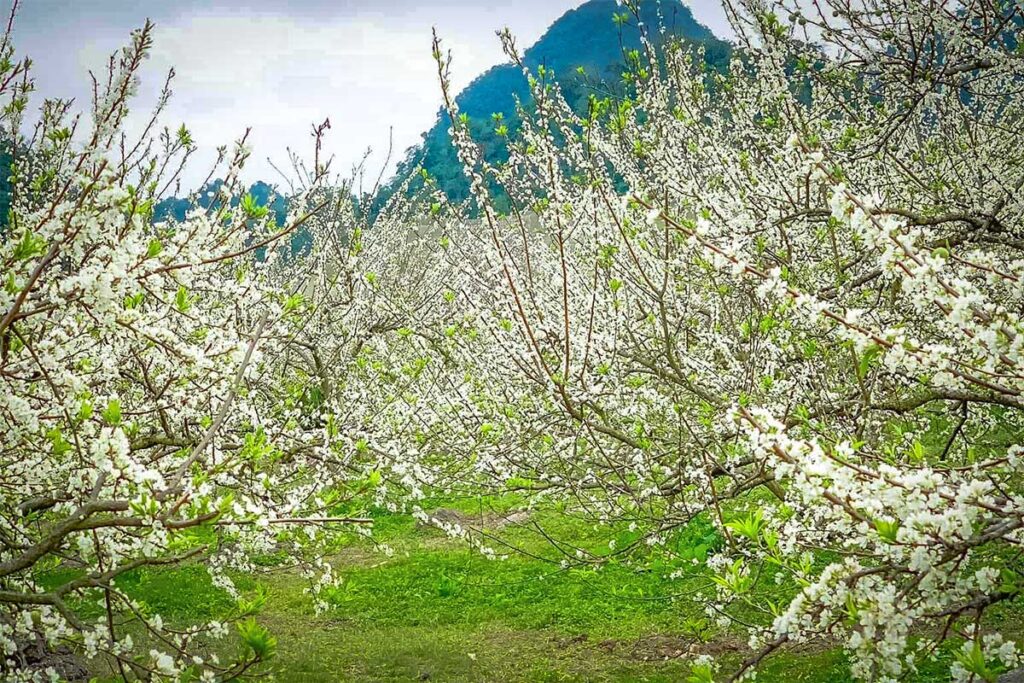
Moc Chau’s blossom season is one of its biggest draws, especially in late winter and early spring. The most famous are the plum blossoms, which typically reach peak bloom between late January and mid-February, often aligning with the Lunar New Year (Tet). Peach blossoms also bloom around the same time and can often be seen growing alongside plum trees, adding pink hues to the snowy white landscape.

Earlier in the year, from November to December, fields of white mustard flowers and patches of buckwheat create a softer, low-lying carpet of blooms. Sunflowers occasionally appear during this time too, especially in the warmer valleys.
Top spots to see the blossoms include Na Ka Valley, Pa Phach Village, Mu Nau Valley, and Ban Ang Pine Forest. The season is short and weather-sensitive, so exact bloom dates can vary slightly each year depending on temperature and rainfall.
Best time for scenic landscapes
While Moc Chau is most popular in the dry months and blossom season, the region’s natural scenery is at its best between May and October, when rain brings the landscape to life. During this period, you’ll find the greenest tea hills, lush forests, and waterfalls at full strength—especially impressive in late spring, summer, and early autumn.
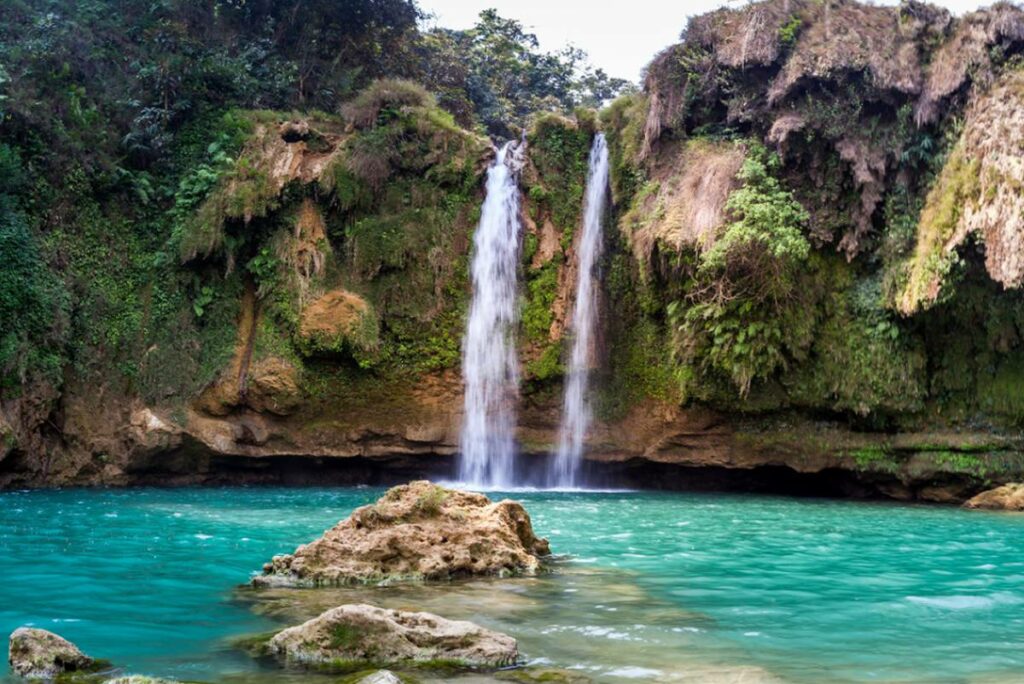
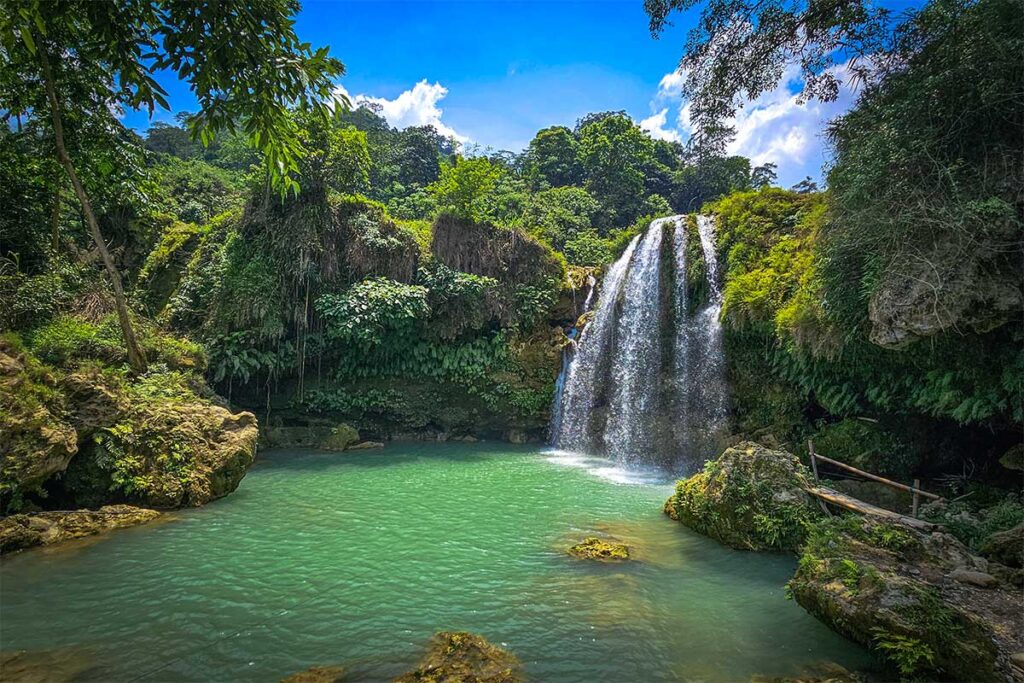
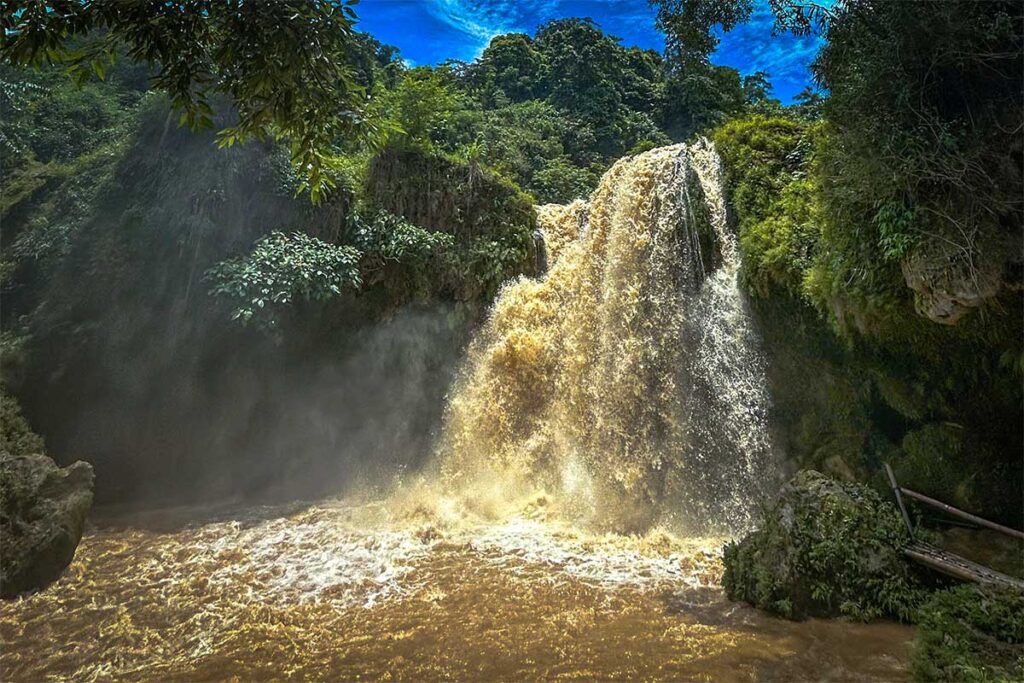
From June to September, Moc Chau’s countryside is at its most vibrant, and fruit orchards are full of ripe plums and peaches. If you’re interested in trekking, forest photography, or visiting waterfalls like Dai Yem, this is the time to go.
However, the rainy season also comes with trade-offs: sudden downpours, muddy trails, and more insects in forested areas. The months after the rainy season (September–October) still offer stunning scenery, but with less rain and more stable weather—making it a great balance.
In contrast, by late dry season (February–April), some areas may look drier and waterfalls may shrink or nearly dry up, especially if there’s been little rain. So if greenery and natural landscapes are your priority, the months from May to October are your best bet.
Moc Chau by Season
Moc Chau experiences four distinct seasons, each offering different weather conditions, landscapes, and travel experiences. Here’s what to expect in each season:
Spring (Jan–Mar)
This is blossom season, with plum and peach flowers transforming the hillsides in white and pink. Mornings are often misty, and evenings remain cold. The Tet holiday (Lunar New Year) usually falls in this period, attracting many local travelers.
Travel tips:
- Book accommodation early if visiting during Tet
- Dress in layers – mornings and evenings are cold
- Best time for photographers and blossom seekers
Summer (Apr–Aug)
Summer brings more rain but also more greenery. Tea fields are at their most vibrant, waterfalls flow strongly, and it’s the main fruit season (plums and peaches). Rain usually comes in short bursts.
Travel Tips:
- Bring rain gear – umbrella or light poncho
- Avoid muddy trails after downpours
- Ideal time for visiting waterfalls and tea hills
Autumn (Sept–Oct)
Autumn offers a mix of clear weather and beautiful landscapes, with golden rice fields, wildflowers, and mild temperatures. Rain decreases and the air feels fresher.
Travel Tips:
- Best balance of scenery and comfort
- Great for trekking, cycling, and outdoor activities
- Pack a light jacket for cool nights
Winter (Nov–Dec)
The coldest months in Moc Chau, with chilly mornings and misty days. It’s also the season for white mustard flowers and buckwheat blooms, often seen in valleys and farms.
Travel Tips:
- Wear warm clothing, especially at night
- Fog is common in the morning – check the forecast
- Good for flower lovers and cozy homestay stays
Weather & Scenery by Month
This month-by-month breakdown helps you plan your visit based on temperature, rainfall, and natural highlights in Moc Chau.
January
- Cold, foggy mornings
- Start of plum blossom season (late Jan)
- Tet preparations begin
February
- Peak of plum and peach blossoms
- Clearer skies later in the month
- Busy travel season due to Tet
March
- End of blossom season
- Mild weather with good visibility
- Tea hills are fresh and green
April
- Warming up, but still dry and comfortable
- Shoulder season begins
- Pleasant weather for outdoor activities
May
- Start of the rainy season
- Still mild and green early in the month
- Waterfalls become more active
June
- Hot and humid, with frequent showers
- Plum harvest season
- Great time for visiting fruit farms and tea hills
July
- Peak of the rainy season
- Waterfalls at their fullest
- Trails may be muddy and slippery
August
- Rain continues but with breaks
- Lush scenery and cooler nights
- Low season perks: fewer tourists, green views
September
- Rain tapers off
- Golden rice fields at their best
- Early wildflowers begin to bloom
October
- Mild, dry, and scenic — ideal conditions
- Best month for trekking and photography
- Clear skies and vibrant landscapes
November
- Cool and dry with clear views
- White mustard and early buckwheat flowers bloom
- Excellent for countryside walks and flower photography
December
- Coldest month of the year
- Buckwheat and wildflowers still blooming
- Crisp air and fewer crowds
